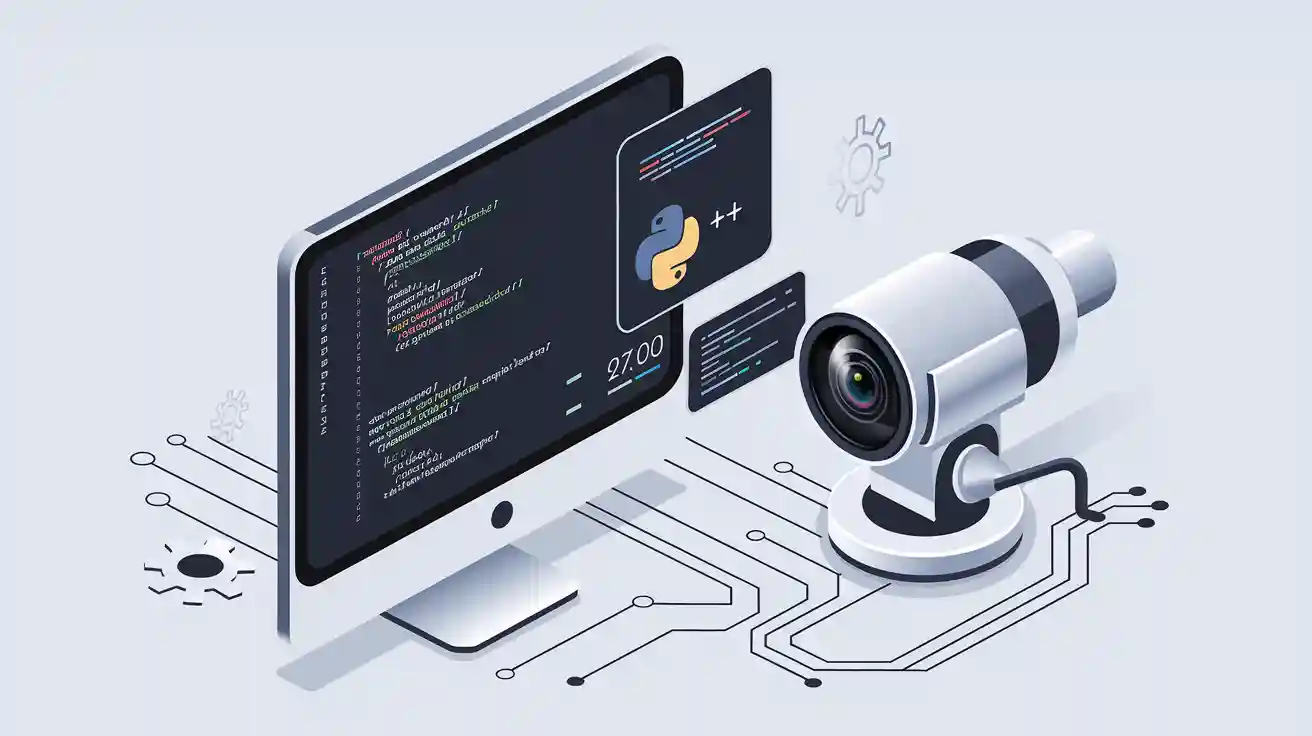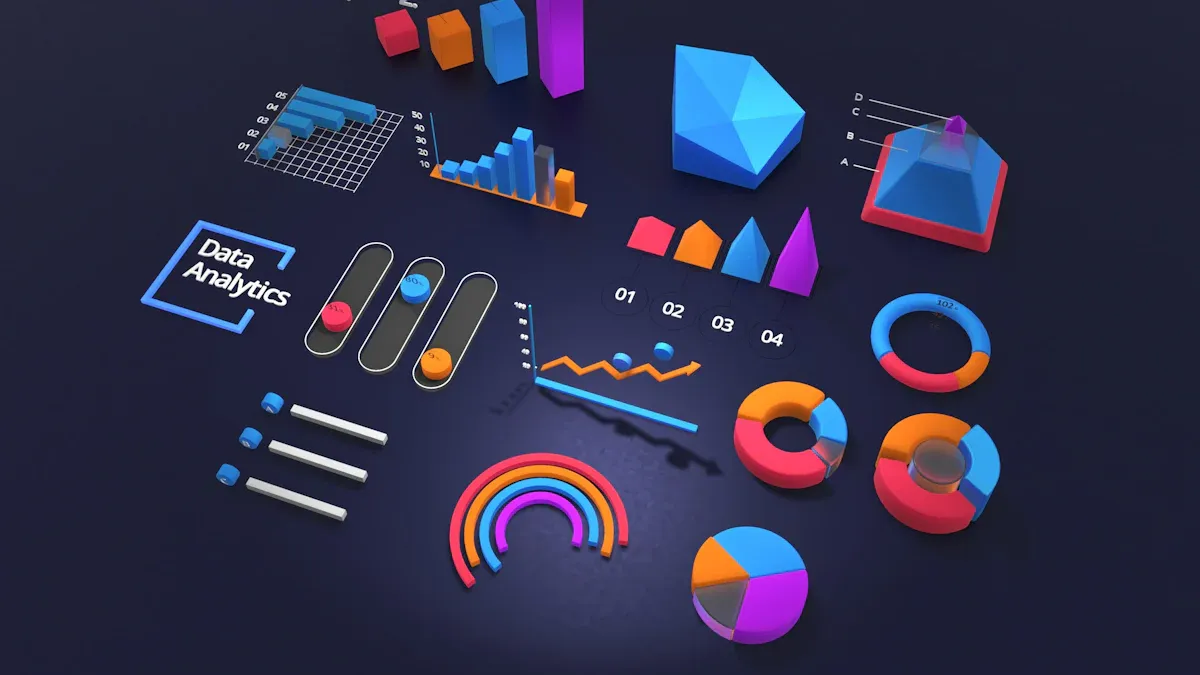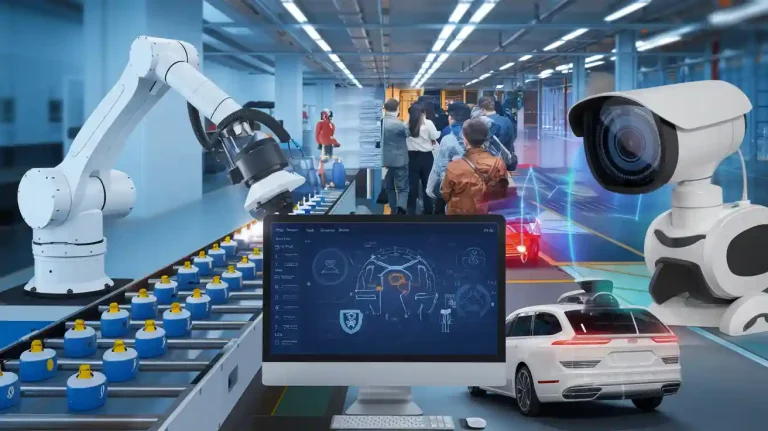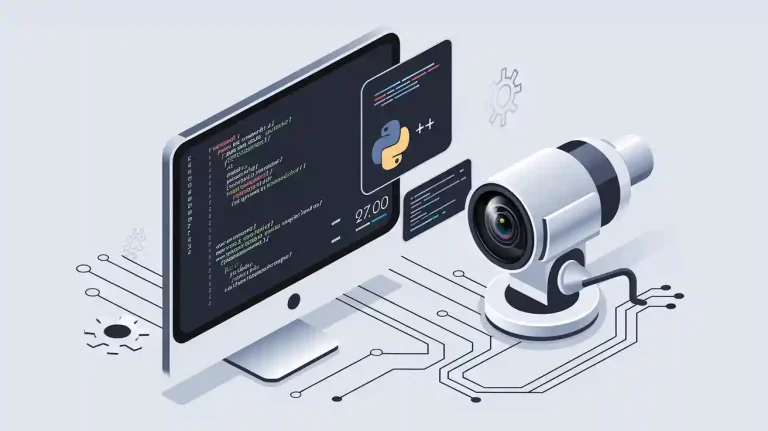
AI transforms machine vision by using programming languages (python) in powerful ways. Python helps developers work with computer vision, machine learning, and AI tasks quickly. C++ powers real-time machine vision systems where speed matters. Programming languages drive AI, machine intelligence, and computer vision. OpenCV, a popular open source computer vision library, supports both python and C++. AI researchers use programming and learning to build machine vision systems with OpenCV. Learning programming, especially python, gives users a strong base in AI, computer vision, and machine learning. OpenCV connects programming languages and fuels AI in modern vision systems.
Key Takeaways
- Python offers easy coding and fast development, making it great for learning, prototyping, and AI projects in machine vision.
- C++ provides high speed and control, ideal for real-time systems and hardware integration where performance matters most.
- OpenCV supports both Python and C++, allowing teams to start with Python for testing and switch to C++ for faster production.
- Many machine vision projects use both languages together to combine Python’s flexibility with C++’s speed and efficiency.
- Learning Python first builds a strong AI foundation, while mastering C++ helps deploy advanced, high-performance vision systems.
Machine Vision and Programming Languages
System Requirements
Machine vision systems help computers see and understand the world. These systems need programming languages that can handle large amounts of data. They must process images and videos quickly. High-performance is important because many machine vision tasks need real-time results. For example, a robot in a factory must spot problems on a conveyor belt without delay. Programming languages (python) and C++ both support this kind of speed and performance.
Developers use programming to build systems that can do image processing, object detection, and data analysis. Machine vision systems often work with huge sets of data. They need programming languages that can manage this data and run complex analysis. Flexibility also matters. Some systems need to change or update quickly. Python helps with fast development and testing. C++ gives high-performance for tasks that need fast processing and low delay.
Note: Machine vision systems rely on strong library support. Libraries like OpenCV help with image processing, data analysis, and machine learning. These tools make development faster and easier.
Language Roles
Programming languages play different roles in machine vision. Python stands out for its simple syntax and quick development. Many developers use python for data analysis, testing, and building AI models. Python makes it easy to try new ideas and work with machine learning systems. It connects well with libraries for computer vision and image processing.
C++ gives high-performance and speed. Many machine vision systems use C++ for real-time processing and hardware control. C++ works well in embedded systems where every millisecond counts. Developers often use C++ for the final version of a system after testing ideas in python.
Both programming languages (python) and C++ help with AI, machine learning, and computer vision. They support the development of systems that can process data, analyze images, and make smart decisions. Good programming skills help developers build strong machine vision systems for many industries.
Python in Machine Vision

Python Strengths
Python gives developers a simple way to work with machine vision. The language uses clear syntax, so people can read and write code easily. Python helps teams build and test ideas quickly. Many students and professionals choose Python for programming because it supports fast development.
Python works well for rapid prototyping. Developers can try new machine vision applications without spending much time on setup. Python also connects with many tools for data analysis and image processing. This makes it a top choice for AI and computer vision projects.
Python has a strong community. Many people share code and help others learn. This support helps new users start with machine learning development and vision systems. Python also runs on many platforms, so teams can use it for different types of hardware.
Tip: Python lets developers focus on solving problems instead of worrying about complex code. This helps teams finish projects faster.
Python Applications
Python powers many machine vision applications. People use Python for image processing, object detection, and data analysis. Python helps with AI tasks like facial recognition and pattern matching. Many companies use Python to build smart cameras and robots.
Here are some common applications of Python in machine vision:
- Quality control in factories
- Medical image analysis
- Security systems with facial recognition
- Self-driving cars and traffic monitoring
- Retail analytics and customer tracking
Python supports AI and machine learning in these applications. Developers use Python to collect data, train models, and test results. Python also helps with real-time processing in some vision systems. Many teams choose Python for its speed in development and its strong support for AI.
Python Libraries
Python has many libraries for machine vision. These libraries help with programming, data processing, and AI development. OpenCV stands out as the most popular library for computer vision. OpenCV gives tools for image processing, object detection, and video analysis. Developers use OpenCV with Python to build many vision applications.
Other important Python libraries include:
| Library | Main Use | AI Support |
|---|---|---|
| OpenCV | Image and video processing | Yes |
| TensorFlow | Machine learning and AI | Yes |
| scikit-image | Image analysis and processing | Yes |
| NumPy | Data handling and math | No |
| PyTorch | Deep learning and AI | Yes |
Python connects with these libraries to make machine vision development easier. OpenCV works with both Python and C++, but many people choose Python for its simple programming style. Python also helps with data collection, analysis, and AI model training. These libraries let developers build powerful vision applications for many industries.
Note: OpenCV supports both Python and C++. This makes it easy to move from testing in Python to high-speed production in C++ if needed.
Python gives developers the tools they need for AI, machine learning, and computer vision. Its strong ecosystem, easy programming, and wide range of libraries make it a top choice for machine vision development.
C++ in Machine Vision
C++ Strengths
C++ stands out in machine vision because it delivers high-performance computing for demanding tasks. Many machine vision systems need to process large amounts of data at high speed. C++ gives developers the tools to achieve this level of performance. The language allows direct control over memory and hardware, which helps optimize processing times and resource use. This control leads to efficient data handling and fast image processing.
C++ supports high-performance computing by letting developers manage memory manually. This reduces overhead and increases speed. Many companies use C++ for real-time computer vision because every millisecond counts in these applications. C++ also works well with existing codebases, so teams can add new features without rewriting old software. The language runs on many platforms, making it a good choice for cross-platform vision systems.
- C++ offers exceptional performance and speed for large-scale data processing.
- Developers get fine-grained control over memory and hardware resources.
- Manual memory management leads to resource efficiency and less overhead.
- C++ allows easy integration with existing C++ codebases.
- The language supports cross-platform compatibility for machine vision applications.
- Specialized libraries like Dlib provide tools for computer vision and machine learning.
Note: High-performance computing in C++ helps machine vision systems handle complex analysis and real-time processing with ease.
C++ Applications
C++ powers many high-performance machine vision applications. Developers use C++ in production systems where speed and reliability matter most. Many factories use C++ for automated inspection, where systems must process image data quickly to spot defects. Medical devices rely on C++ for real-time analysis of medical images. Security cameras use C++ to process video streams and detect unusual activity.
Embedded systems often use C++ because it integrates well with hardware. These systems need fast data processing and low power use. C++ helps developers build vision applications for robots, drones, and smart cameras. Many automotive companies use C++ for driver assistance systems that require real-time computer vision.
Some common applications include:
- Automated quality control in manufacturing
- Medical image processing and analysis
- Security and surveillance systems
- Robotics and autonomous vehicles
- Industrial inspection and monitoring
C++ supports high-performance computing in all these areas. The language handles large data sets and complex processing tasks. Developers choose C++ when they need reliable, fast, and efficient machine vision systems.
C++ Libraries
C++ has a strong ecosystem of libraries for machine vision. OpenCV is the most popular library for image processing and computer vision. OpenCV gives developers tools for data analysis, object detection, and video processing. Many high-performance applications use OpenCV with C++ to achieve fast processing speeds.
Other important C++ libraries include Dlib and Halcon. Dlib offers machine learning and computer vision tools for face detection and object tracking. Halcon provides advanced image analysis for industrial applications. These libraries help developers build high-performance systems that can process and analyze data in real time.
| Library | Main Use | High-Performance Support |
|---|---|---|
| OpenCV | Image processing, computer vision | Yes |
| Dlib | Machine learning, face detection | Yes |
| Halcon | Industrial image analysis | Yes |
C++ libraries support integration with hardware and other software. Developers can connect vision systems to cameras, sensors, and embedded devices. OpenCV works with both C++ and Python, but C++ gives the highest performance for production systems. These libraries make it possible to build reliable, fast, and scalable machine vision applications.
Tip: Using C++ with OpenCV helps developers achieve the best speed and performance for real-time data processing and analysis.
OpenCV and Programming Languages
OpenCV stands as a powerful open source computer vision library. Developers use OpenCV to build machine vision systems in many industries. OpenCV supports both Python and C++. This cross-language support helps teams choose the best tool for each task. OpenCV acts as a bridge between Python and C++. Many developers start an OpenCV project in Python for fast testing. They later use C++ for high-speed production systems. OpenCV gives the same functions in both languages, so teams can move code easily.
OpenCV with Python
Python works well with OpenCV. Many students and engineers use Python to learn computer vision. OpenCV in Python has simple commands. This makes it easy to read and write code. Teams use Python with OpenCV for rapid prototyping. They can test ideas and build models quickly. OpenCV in Python helps with tasks like face detection, object tracking, and image filtering.
A typical example uses OpenCV in Python to read an image, find edges, and show the result:
import cv2
image = cv2.imread('input.jpg')
edges = cv2.Canny(image, 100, 200)
cv2.imshow('Edges', edges)
cv2.waitKey(0)
Python and OpenCV help teams finish projects faster. Many AI researchers use Python with OpenCV to train and test machine learning models.
OpenCV with C++
C++ gives OpenCV high performance. Many companies use C++ with OpenCV for real-time systems. OpenCV in C++ works well in robots, cameras, and embedded devices. Developers use C++ to process video streams, control hardware, and analyze images at high speed.
A common OpenCV project in C++ reads a video, detects objects, and sends alerts:
#include <opencv2/opencv.hpp>
cv::Mat frame;
cv::VideoCapture cap(0);
while (cap.read(frame)) {
// Object detection code here
cv::imshow("Frame", frame);
if (cv::waitKey(30) >= 0) break;
}
OpenCV in C++ supports advanced features and hardware integration. Many production systems rely on C++ and OpenCV for reliable and fast results.
Tip: OpenCV lets teams start with Python for testing and move to C++ for speed. This flexibility makes OpenCV a top choice for machine vision.
Learning Python and C++ for Vision
Choosing a Language
Selecting the right language for machine vision learning depends on the project’s needs. Python offers a simple way to start learning about ai and data processing. Many students and professionals choose python for its easy syntax and strong support for ai applications. Python helps with fast development and testing. It works well for rapid learning and building prototypes. Many learning resources and tutorials use python, making it a top choice for beginners.
C++ gives higher performance for machine vision applications that need real-time results. Developers use C++ when they need fast data processing and direct integration with hardware. C++ supports integration with existing systems in enterprise applications. Teams often move from python to C++ when they need better performance in production.
Tip: Start learning with python for quick development and move to C++ for high-performance ai applications.
A simple table can help compare the two languages:
| Language | Best For | Performance | Learning Curve |
|---|---|---|---|
| Python | Prototyping, ai, data | Medium | Easy |
| C++ | Real-time, hardware | High | Harder |
Hybrid Approaches
Many teams use both python and C++ in machine vision learning. This hybrid approach combines the strengths of both languages. Developers use python for data collection, model training, and testing. They switch to C++ for final deployment and high-speed ai applications. OpenCV supports both languages, making integration easy.
Hybrid learning helps teams get the best performance and flexibility. Python speeds up development and learning. C++ delivers fast processing for real-world systems. Integration capabilities allow teams to connect ai models built in python with C++ production code. This approach supports enterprise applications that need both rapid learning and strong performance.
Note: Hybrid integration gives teams the power to use the right tool for each part of the ai learning process.
Python helps users start ai projects quickly. C++ gives high speed for real-time ai systems. Many teams use both languages for strong machine vision applications. OpenCV supports both, making hybrid ai solutions easy. Learning python first helps with basic ai skills. C++ learning builds advanced ai and hardware control. Students should focus on learning by building real ai applications. They can use python for fast ai model testing. C++ helps with final ai deployment. Learning both languages gives more options for ai learning and real-world applications.
FAQ
What is the main difference between Python and C++ in machine vision?
Python helps developers build and test ideas quickly. C++ gives high speed and control for real-time systems. Many teams use Python for learning and prototyping. They choose C++ for final products that need fast processing.
Can beginners use OpenCV for machine vision projects?
OpenCV works well for beginners. Many students start with simple image tasks. The library has many guides and examples. Users can process images, detect objects, and learn computer vision basics with easy commands.
Why do some projects use both Python and C++?
Some teams use both languages to get the best results. Python helps with fast testing and model training. C++ gives high performance for real-time tasks. This hybrid approach supports flexible and strong machine vision systems.
Do programming languages (python) matter for hardware integration?
Programming languages (python) play a role in hardware integration. C++ connects well with cameras and sensors for real-time control. Python can also work with hardware, but C++ often gives better speed and reliability in these cases.
How do teams move from Python to C++ in machine vision?
Teams often start with Python to test ideas. When they need more speed, they rewrite key parts in C++. OpenCV supports both languages, so code can move easily. This process helps teams balance development speed and system performance.









